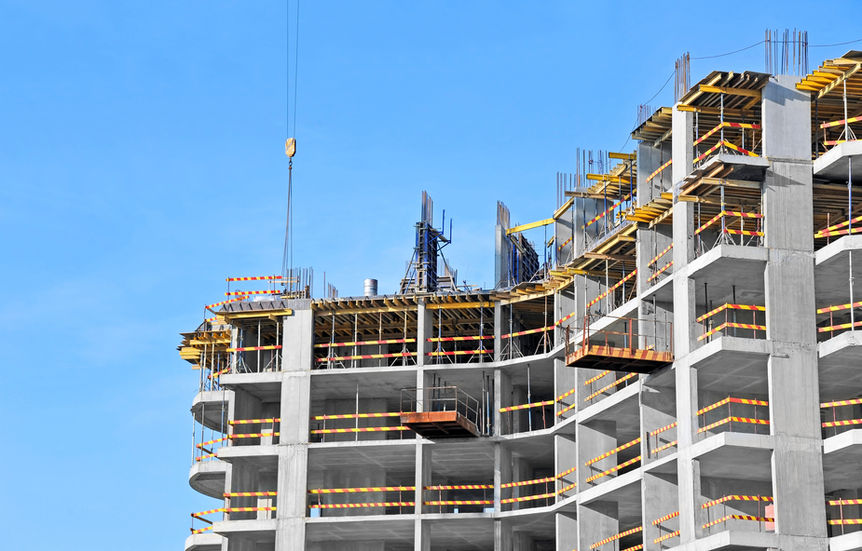Owner of strata property (condominiums, apartments, serviced apartments and flats) will be familiar with the monthly maintenance fees and sinking fund they pay. For those unfamiliar with these terms, find out what they are, how they are calculated, why high-rise owners need to pay for them and what happens if they don’t.
Strata properties come with common facilities that are used by all of the residents within each building. These include lifts, walkways, swimming pools, gyms and community halls, all of which require proper maintenance and management.
This is where the monthly maintenance fee and sinking fund comes in. It is used to maintain common property and pay for services.
These funds are collected and managed by the Joint Management Body (JMB) before the issuance of strata title and by the Management Corporation (MC) after strata titles are issued.
What is a sinking fund?
Recurring costs such as security services, cleaning services, utility bills and lift servicing are predictable and can be factored in to the monthly expenses.
What if the basement car park gets flooded during a thunderstorm? Or a large crack appears on the building wall and needs to be urgently fixed? Will the management have enough cash flow to cover the costs? In most cases, they probably don’t.
When owners contribute to the sinking fund, they are putting money into a reserve fund to cater to such emergencies and to carry out major works such as painting or refurbishment works.
What is a maintenance fee?
It costs a lot to manage and maintain a property, whether it is to hire the security and cleaning services or to pay for the electricity and water used to run the building. Don’t forget, even the management and administration staff need to be paid.
The maintenance fee, or service charge, that you pay every month is used for these recurring costs, for the upkeep of facilities and for any minor repair works on common property.
How much maintenance fee do you have to pay?
Maintenance fee is shared among unit owners so the maintenance cost will be divided among the units. This fee differs from one property development to another.
Some of the factors that determine how much each unit owner pays are:
Parcel size: the amount of maintenance fee you pay is dependent on the size of your unit.
Usage type: in mixed development properties, retail units incur higher fees than residential units.
Access to facilities: the more facilities you have access to (for example lifts and air-conditioning in the common areas), the more you pay.
Number of units: owners with units in a high-density development will pay less than owners in an exclusive low-density development.
How to calculate maintenance fee in Malaysia?
The cost of maintenance depends on various factors, among them:
Type of services: this typically includes security, cleaning, lift servicing.
Type of facilities: basic facilities usually include swimming pool, gymnasium and an event area. More facilities will incur more maintenance cost.
Size and type of common area: the bigger the area, the more cost to clean and maintain the area. The cost also depends on the services needed to maintain it. For example, a garden with intricate landscaping and water features could cost more to maintain than a community hall of the same size.
Acceptable level of service: residents and owners need to decide what is deemed as “acceptable”. Will they agree to the corridors being swept only once a week or having one less security guard for each shift?
The formula for calculating maintenance fee is as follows:
Operating expenditure ÷ Total share units in condo development
= Maintenance fee to be paid
An effective management will be able to provide a good level of maintenance while keeping costs down by negotiating good rates with service providers. However, do remember that good services do not come cheap so it might be worth paying a higher price for services that matter.
How much sinking fund do you have to pay?
Sinking fund is calculated at 10% of the maintenance fee. The JMB or MC can change this amount only during an annual general meeting (AGM) but it should be no less than 10% of the maintenance fee.
However, the JMB or MC may increase the rate of sinking fund at more than 10% of the maintenance fee. This rate can only be implemented if everyone agrees to it during the JMB’s or MC’s general meeting.
Do you have to pay for maintenance fee and sinking fund?
The straightforward answer is yes, you have to pay maintenance fee and sinking fund if you are a unit owner of a strata property. There are provisions under the Strata Management Act 2013 for management bodies to determine, impose and collect these charges.
What happens if you don’t pay your building’s maintenance fee?
Since you are obliged by law to pay maintenance fee, the building management can take legal action against you. Before bringing you to court, the management can also forcibly enter your unit and seize moveable properties to be auctioned off.
You will also lose your rights to vote during the Management Corporation’s AGM.
Local councils, which manage public housing in Malaysia, are starting to take this issue seriously. In a landmark case in July 2020, the Subang Jaya Municipal Council became the first local council to pursue legal action against a defaulter. The defendant, who owns a unit at Pangsapuri Putra Walk in Seri Kembangan, was fined for defaulting on his maintenance fees.
Can you dispute the maintenance fee?
If you find that the services provided are not up to standard or you suspect that the funds are being mismanaged, you can question the management. As a unit owner, you have the rights to view the statement of accounts. If all else fails, you can apply for a review with the Commissioner of Buildings (COB).
Can you sue your management if your building is run down?
In short, yes. There’s a reason why you pay for the monthly maintenance fee and sinking fund and that is to ensure that the building you’re living in is well-maintained. So if you find your building is in a less-than-ideal state, you can, of course, bring it up to the management office. That’s one way of doing that. But what happens if your complaint is not taken seriously and the management continues to neglect the state of your building? Instead of visiting the management office on a daily basis and not having things done, you can choose to sue your management.
Under Section 48(1) of the Strata Management Act 2013 states that:
A developer shall, during the preliminary management period and subject to the provisions of this Act, be responsible to maintain and manage properly the subdivided building or land, and the common property.
That Act clearly states that the management is responsible to look after the building’s condition, make sure it’s liveable and that all of its facilities like lifts and CCTVs are functioning. If they fail to do so, then the next part of the Act will explain what kind of penalty they will get.
Under Section 48(4) of the Strata Management Act 2013 states that:
Any developer who fails to comply with subsection (1) commits and offence and shall, on conviction, be liable to a fine not exceeding two hundred and fifty thousand ringgit or to imprisonment for a term not exceeding three years or to both.
What it means is that if your management neglect their duties, they can be fined up to RM250,000 or imprisonment up to 3 years of both! Yes, this is a serious matter and you should hold your building management accountable if they fail to do their job. After all, you did pay a huge sum of money to the building maintenance, it’s only fair to expect them to do their job and upkeep it.
@ https://www.iproperty.com.my



















































































![[UPDATED] Real Property Gains Tax (RPGT) Act 2021 in Malaysia](https://static.wixstatic.com/media/42661b067ebe4806a785cab2668ede60.jpg/v1/fill/w_327,h_250,fp_0.50_0.50,q_30,blur_30,enc_avif,quality_auto/42661b067ebe4806a785cab2668ede60.webp)
![[UPDATED] Real Property Gains Tax (RPGT) Act 2021 in Malaysia](https://static.wixstatic.com/media/42661b067ebe4806a785cab2668ede60.jpg/v1/fill/w_326,h_249,fp_0.50_0.50,q_90,enc_avif,quality_auto/42661b067ebe4806a785cab2668ede60.webp)







































































































































Comments